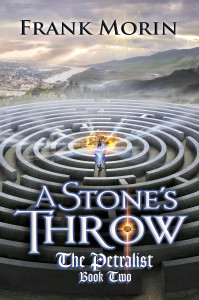Love what you write.
These just aren’t fun platitudes. This is the heart and soul of our writing. What we feel for our stories bleeds out onto the page, and we can’t fake it.
Who would want to invest the time and effort writing something that didn’t move them? Even stories we love can test the limits of our endurance before they’re finished. Writing one we can’t feel passionate about is doomed. Even if we somehow managed to complete such a work, the quality will suffer and readers will sense it.
If we don’t love what we write, how will they?
On the other hand, don’t be afraid to tell people how much you love your work, and what makes it awesome. Many of us are naturally a bit introverted, and we’ve been trained not to blow our own horn.
To be successful, you have to.
Part of being a writer is putting on the marketing and salesman hat and learning to sell your books and to sell yourself. Don’t become obnoxious, but yes be enthusiastic and willing to step into the light with a smile.
If you won’t do it, who will?
We need to be our own biggest fans.
One of my tests of quality of each of my novels is to pick up a finished one and start reading. Despite the fact that I wrote it, and rewrote it, and edited it, and proofed it more times than I care to count, I will invariably get sucked in. I’ll catch myself laughing at my characters’ jokes or getting emotional at important scenes, or gripped with fear about what’s happening next.
I wrote it, but it still gets me every time.
My wife will often laugh at me and tease me that I can get sucked in by my own novels.
All I can do is smile and say, “I’m my own biggest fan.”
I have to be.
Even if no one else loves my books, I do. And that enthusiasm radiates off of me when I talk about them, when I hold launch parties, etc. People pick up on it, they feel it, and they’re drawn to those stories to share in it. Even if they think I’m a little nuts for being so passionate about a story, they can’t deny that enthusiasm, and they usually respond positively, even if it’s only to get me to stop talking so they can escape.
If I don’t love my work, how can I expect anyone else to love it?
So create stories you love, stories you’re passionate about. You’re going to invest months or years of your life into them, so make sure they’re worth that investment of time.
Get inspired. Get excited. Get motivated.
That’s what readers want, so make it happen.
About the Author: Frank Morin

 Frank Morin loves good stories in every form. When not writing or trying to keep up with his active family, he’s often found hiking, camping, Scuba diving, or enjoying other outdoor activities. For updates on upcoming releases of his popular Petralist YA fantasy novels, or his fast-paced Facetakers urban fantasy thriller series, check his website: www.frankmorin.org
Frank Morin loves good stories in every form. When not writing or trying to keep up with his active family, he’s often found hiking, camping, Scuba diving, or enjoying other outdoor activities. For updates on upcoming releases of his popular Petralist YA fantasy novels, or his fast-paced Facetakers urban fantasy thriller series, check his website: www.frankmorin.org



 Evan Braun is an author and editor who has been writing books for more than ten years. He is the author of The Watchers Chronicle, whose third volume, The Law of Radiance, was released earlier this year. In addition to specializing in both hard and soft science fiction, he is the managing editor of The Niverville Citizen. He lives in Niverville, Manitoba.
Evan Braun is an author and editor who has been writing books for more than ten years. He is the author of The Watchers Chronicle, whose third volume, The Law of Radiance, was released earlier this year. In addition to specializing in both hard and soft science fiction, he is the managing editor of The Niverville Citizen. He lives in Niverville, Manitoba.